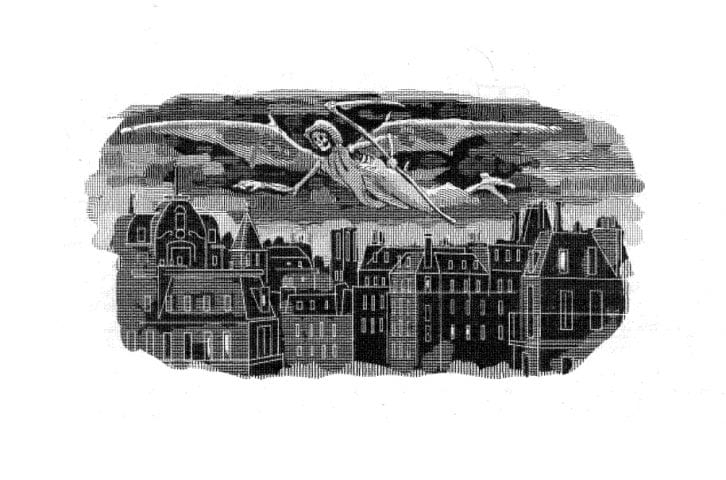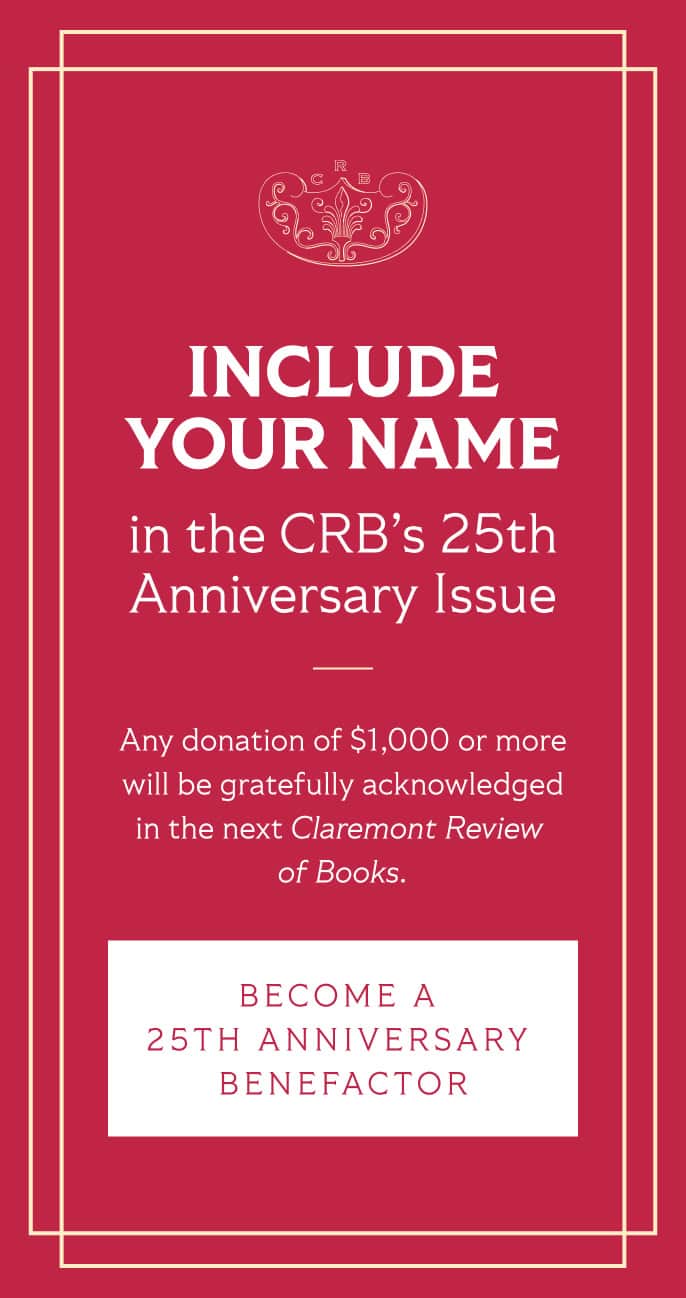Books Reviewed
The standard framework for explaining American politics—a struggle between liberals and conservatives—is of limited utility. American politics in our age is better described as the struggle between those who revere Franklin Roosevelt and those who revere Ronald Reagan. Nancy Pelosi, for example, says that just three words refute the charge that today’s Democrats are out of ideas. It’s telling that she sees nothing odd about the fact that those three words—”Franklin Delano Roosevelt”—name a president who died 61 years ago, before 80% of the Americans now alive were born.
It is easier to see what is compelling and contentious about our politics by looking to FDR and Reagan than by examining abstract ideologies. The two men’s uncanny similarities are almost as interesting as their differences. Reagan cast his first four presidential ballots for FDR. His experience, as a citizen, of Roosevelt’s hold on the nation’s imagination, combined with his own career as a Hollywood star and union leader, persuaded Reagan of the connection between stagecraft and statecraft.
Both Roosevelt and Reagan were routinely dismissed as lightweights. Both survived assassination attempts in the months after their elections. Both came to office confronting economic problems so severe that many Americans had given up hope for a more prosperous future. Both faced implacable tyrannies abroad; both confronted elite and popular opinion that called it madness not to seek some kind of accommodation with those tyrannies; both steered the nation on a course that culminated in the collapse of the totalitarian governments that threatened us.
Both FDR and Reagan transformed the political terrain. Each man’s vice president won the next presidential election—owing largely to his predecessor’s popularity. Their political influence, however, was demonstrated in the subsequent elections. The nominees of the other party, Dwight Eisenhower and Bill Clinton, won them, only to spend eight years constrained by, respectively, Roosevelt’s and Reagan’s achievements. The Republican president and Congress elected in 1952, the first such confluence of GOP power in 20 years, quickly abandoned any serious attempt to scale back the New Deal. “Should any political party attempt to abolish social security, unemployment insurance, and eliminate labor laws and farm programs, you would not hear of that party again in our political history,” Eisenhower wrote in 1954.
Thirty-nine years later, President Clinton complained that his initiatives in education, health care, and the environment were being strangled by political and fiscal realities. “I hope you’re all aware we’re all Eisenhower Republicans now,” he told his Cabinet in 1993. “We stand for lower deficits and free trade and the bond market.” The biggest legislative achievements of his presidency, the North American Free Trade Agreement and abolition of Aid to Families with Dependent Children, were trophies that would look more at home on Reagan’s wall than Clinton’s own.
Another measure of Reagan’s achievement is the shadow he casts on the more distant past, and the way that shadow falls on FDR. Jonathan Alter’s The Defining Moment: FDR’s Hundred Days of Triumph and Hope, is a book praising Roosevelt. In the aftermath of Reagan’s presidency, however, praising FDR is a more complicated task than it used to be. Alter, for example, says that the libertarian author Jim Powell makes a “good case” that Roosevelt “never figured out how to stimulate business with a strategy of incentives for growth.” Alter speculates: “Had war not broken out in Europe late in 1939, Roosevelt would have left office in early 1941 having reduced unemployment from a quarter to a fifth of the workforce—and would likely have been viewed by historians as a far less significant figure.”
Frank Freidel, Arthur M. Schlesinger, Jr., or William Leuchtenburg would never have conceded a fraction of this ground. In the two decades following FDR’s death, these historians tried to make the great man’s legacy revision-proof. All three viewed FDR’s political adversaries as America’s enemies. In particular, all three explained the Depression as a crisis of capitalism brought on by the greed and corruption of capitalists.
This opinion cannot safely be called Roosevelt’s own settled view—no one opinion can—but it was a viewpoint FDR expressed frequently and emphatically. In his acceptance speech to the 1936 Democratic convention, he spoke of “economic royalists” and “privileged princes” of “economic dynasties” who had “created a new despotism.” In that campaign’s final speech Roosevelt said, “I should like to have it said of my first Administration that in it the forces of selfishness and of lust for power met their match. I should like to have it said of my second Administration that in it these forces met their master.”
Frank Freidel’s four-volume history on the rise of FDR endorses this view, blaming the Depression on the “selfishness and hostility of a large part of big business.” In The Age of Roosevelt (1957-1960), Schlesinger’s villains are the laissez-faire Republicans who saw “all problems from the standpoint of business.” William Leuchtenburg’s verdict in Franklin D. Roosevelt and the New Deal, 1932-1940 (1963) is the same: “Monopoly and oligopoly were not the exception but the rule…. [The] two thousand men who controlled American economic life manipulated prices and production.” Alter nowhere buys into such flat-earth economics.
The significant distance between Alter, a senior editor at Newsweek, and these earlier historians is clear on the question of international economics. Cordell Hull, FDR’s Secretary of State, called his president’s determination to lower tariffs only after establishing a sound national economy a “half-insane policy of economic isolation…the largest single underlying cause of the present panic.” Alter not only believes that Hull was “almost certainly right” in his judgment, but blames FDR for not caring much about free trade or seeing its relation to economic recovery. For Freidel, Schlesinger, and Leuchtenburg, by contrast, FDR’s “economic nationalism” is a defensible policy, or at least a defensible mistake necessitated by political realities.
Alter’s skepticism extends to economic policy more broadly. “[T]he central conceptual flaw of the New Deal,” he writes, was that “the Roosevelt Administration offered no growth agenda besides public works. Policies were implemented without regard for their impact on productivity.” Not even FDR’s most strenuous defenders, of course, contend that he thought rigorously about economics. In The End of Reform (1995), Alan Brinkley says the New Dealers believed that “the nation’s greatest problems were rooted in the structure of modern industrial capitalism and that it was the mission of government to deal somehow with the flaws in that structure.” Beyond a commitment to experimenting vigorously, however, the New Deal never sorted out that nagging “somehow” part.
One important difference between Roosevelt and Reagan is that the economic theory that made sense of Roosevelt’s policies, namely Keynesianism, wasn’t really embraced by Democrats until after the New Deal. Brinkley says that by the end of World War II liberals had come to understand their agenda “less as a commitment to restructure the economy than as an effort to stabilize it and help it grow.” This commitment quickly became dogma. An exuberant article in the New Republic in 1961 called for spending “as much government money as possible, and [making] sure that the amount the government spends rises rapidly each year…. [A] very high level of government spending, no matter where the money goes, assures a very high level of demand. And a high level of demand is the open sesame to everything else.”
Keynesian theory called for regulating aggregate demand through counter-cyclical government spending, stimulating the economy when it was sluggish and restraining it when it was too vigorous. As the New Republic article reveals, however, there was a strong bias favoring the fun side of this cycle over the demanding side. The discipline of economics was originally known as political economy for a reason—all the political incentives favor refilling the punch bowl, not taking it away. Keynesianism in practice was not a cycle but a ratchet, moving easily in one direction but rarely and with difficulty in the other.
The bias toward overstimulation became clear by the 1970s, when the asymmetry of fiscal policy caused rising inflation. This was not the only difficulty in putting Keynesian theory into practice. Counter-cyclical spending is about timing. By the time Congress perceives an economic downturn, votes for higher spending, and actually begins getting the money out the door, the business cycle has moved on. The time lag means the government is often accentuating the business cycle rather than moderating it, stimulating a recovering economy rather than a stagnant one. Furthermore, economic decisions came to be made in the expectation of government stimulus, which meant that, like a narcotic, larger doses of government spending began producing smaller effects.
When he came to the White House, inheriting an economy that was both stagnant and inflationary, Ronald Reagan was conversant with and committed to the monetarist and supply-side economic theories that would guide his economic policy. Both theories had subtle and elaborate explanations, but simple essences. Monetarism insisted that if the supply of money grows faster than the amount of real wealth, the real value of the money will decline steadily through inflation. Supply-side economics holds that: 1) government tax revenues equal the tax rate multiplied by the tax base; 2) a lower tax rate applied to a larger tax base will be revenue-neutral; and 3) the tax base is not an independent variable but one that can increase if the tax and regulatory burden on the economy is alleviated.
Whether because monetarism and supply-side economics are sound theories, or because following any theory that isn’t crazy is better than furious improvisation, Reagan had better success against the economic problems of the 1980s than Roosevelt did against those of the 1930s. “[T]he New Deal did not end the Depression,” Alter concludes. The facts could hardly permit a contrary assessment. The downturn that began in 1937 was the only time in U.S. history that one recession followed another in such short order. Unemployment rose, productivity and the stock market fell. FDR blamed the downturn on a “capital strike” by businessmen trying to destroy the New Deal, even ordering a futile FBI investigation of possible criminal conspiracy by the “strikers.”
Economic health was restored only by the massive spending required by World War II—federal spending exceeded 40% of the GNP from 1943 through 1945. The economic boom that came after 1945 also, in a way, owed a great deal to the war. As the only modern nation whose industrial infrastructure was unscathed in the war, the U.S. held unprecedented and durable advantages. By 1950 America had 7% of the globe’s population but was producing 43% of all the electricity in the world, 57% of the steel, and 80% of the automobiles.
Despite his clear-eyed assessment of the economic record, Alter still praises Roosevelt. One reason is the psychological impact of FDR’s leadership on an anguished nation. FDR radiated confidence at a time when it was in desperately short supply. Though FDR often did not know what he was doing, Alter credits FDR for convincing people he did-and that reassurance made all the difference. His fireside chat on the banking crisis, his soaring First Inaugural, and his survival of an assassination attempt in Miami cultivated a heroic image, self-assured and optimistic. “The secret of his political genius,” wrote Saul Bellow, “was that he knew exactly what people needed to hear, a personal declaration by the president that took into account the feelings of the people.”
What’s more, FDR used revolutionary rhetoric instead of revolutionary policies to voice “anger and resentment,” Alter writes, “without destroying the system. He believed tongue-lashing the money changers was sufficient, without actually driving them out.” This argument fits the view that FDR saved capitalism: in a nation where the alternatives were Huey Long and Father Coughlin, and a world where the alternatives were Hitler and Stalin, the New Deal did much less harm than it might have.
Alter praises FDR for rewriting America’s social contract. Had the New Deal been an economic success, quickly restoring the prosperity of the 1920s, the political demand for an American welfare state might well have been as tepid as before the crash of 1929. The persistence of the Depression, however, legitimized the idea that destitution is a result of social dysfunction, not individual improvidence. Public programs for the aged and unemployed were the logical consequence, both politically and governmentally. Ronald Reagan used his own rhetorical gifts to modify FDR’s social contract, but never attempted to revoke it. The great virtue of Alter’s book is that it defends FDR on narrower, more defensible grounds in light of subsequent evidence of FDR’s failure to promote economic growth. One of the great questions that will shape our politics in subsequent generations is whether the next generation’s Jonathan Alter will have to narrow the grounds of FDR’s greatness even further.







